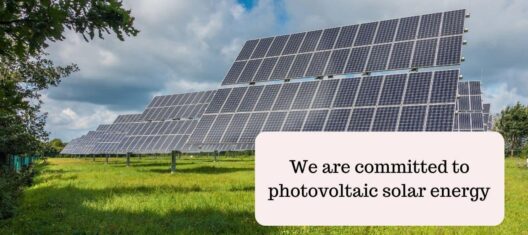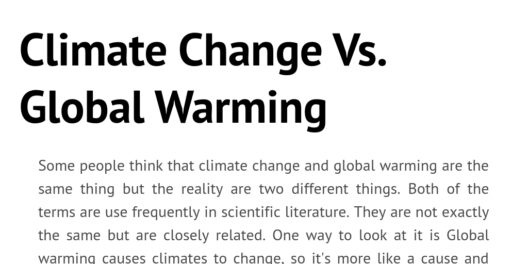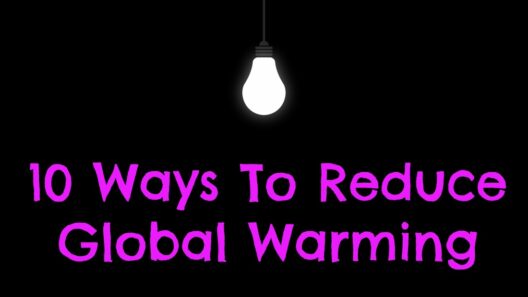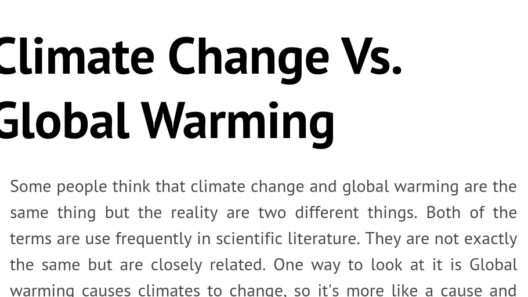The enigmatic intersection of prophetic literature and pressing environmental crises offers fertile ground for contemplation. If we consider the biblical “7 Trumpets,” a symbolic framework often associated with foreboding events and divine warnings, we can draw intriguing parallels to our contemporary struggle with global warming. These symbolic trumpets serve not only as a call to action but also as a mirror, reflecting humanity’s deteriorating relationship with nature.
At the heart of this exploration lies the concept of prophecy—a forecasting mechanism that unveils the potential ramifications of our actions, or inactions. Each trumpet, though steeped in religious connotation, can be perceived as a clarion call regarding the climate challenges we face today. Just as the sounding of each trumpet heralds a momentous event, so too do the escalating manifestations of climate change signal an urgent need for awareness and action.
The first trumpet could symbolize the sound of nature’s wrath, akin to the alarming phenomena we now witness: unprecedented wildfires, flooding, and hurricanes that rage with a ferocity once thought reserved for the realm of fiction. As the forests cry out in flames, a metaphor emerges; they are no longer merely landscapes but rather sentinels of a planet in distress. This trumpet resonates an undeniable truth; the earth’s ecosystem is responding to the relentless imprints of human activity.
When the second trumpet is sounded, the oceans—our planet’s vital lifeblood—are transformed. The imagery is stunning, depicting a vast and tumultuous body of water, comparable to a cauldron boiling over. In the context of environmental degradation, the oceans do more than reflect our plight; they embody it. Rising temperatures and acidification threaten not only marine life but also the very fabric of human existence. Our dependence on these waters serves as a haunting reminder that, while the seas may appear vast, they are finite and fragile. The metaphor hereby extends: like lost souls in a tempest, we too risk being consumed by the very environment we take for granted.
As we proceed to the third trumpet, one can envision a world where natural resources become increasingly scarce—a scenario that is no longer speculative but rather an emerging reality. Labelled “Wormwood,” this trumpet warns of the bitter consequences of pollution and waste. The palpable corruption of our fresh water sources draws an ironic parallel with the ecological degradation. The bitterness of the waters serves as an emblematic representation of human hubris, a poignant reminder that our choices have dire repercussions. It compels society to reevaluate its priorities, urging a transition towards sustainable practices and water conservation.
The fourth trumpet resonates with the cosmic ramifications of climate change, impacting everything from agricultural cycles to weather patterns. This sounding can evoke imagery of the sun, moon, and stars cloaked in a shroud of smog and pollution. The beauty of our celestial bodies is compromised by our inability to act responsibly. This metaphor underscores an alarming reality: our world is finite, governed by cosmic forces that become increasingly unyielding as we neglect our stewardship of the planet. The harmony that once existed is now marred by dissonance—a stark reminder that our future depends on re-establishing balance.
The fifth trumpet, often associated with locusts and plagues, encapsulates the potential for ecological collapse. In this scenario, invasive species proliferate, wreaking havoc on ecosystems and leading to biodiversity loss. The metaphor extends to humanity: when ecosystems falter, it is often a reflection of social unrest, economic disparity, and a breakdown of collaborative efforts. Climate change serves as both a symptom and a catalyst for these disruptions, amplifying existing inequalities worldwide.
As the sixth trumpet sounds, the dire consequences of climate change accelerate, portraying visions of great chaos and destruction. The metaphorical “Euphrates” River drying up evokes images of a future where water scarcity leads to widespread conflict. This distressing image highlights not merely environmental crises but also the geopolitical ramifications of resource depletion. The battle for water in a warming world becomes akin to an impending apocalypse, where survival trumps morality. This urgent reality drags us deeper into a quagmire where hope for resolution diminishes with each passing day.
The seventh and final trumpet heralds the potential for regeneration—a signal of transformation, urging an introspective return to our roots in harmony with the planet. However, this beneficial outcome requires collective engagement, global cooperation, and an unwavering commitment to change. It serves as a call to action for humanity to innovate, to embrace renewable resources, and to exercise sustainable practices. Just as prophecies offer paths to redemption, so must we envision a future where technology and nature coalesce harmoniously.
Ultimately, the metaphor of the “7 Trumpets” serves as a sobering reminder of the choices we face. Our futures can either echo with the cataclysm of unheeded warnings or be enriched by the decisive actions we take today. It urges a fundamental shift in mindset from passive existence to proactive stewardship. When contemplating the prophecy of a planet, one question remains paramount: will we act in time to respond to the clarion call of our environment, or will the final trumpet signify a world irrevocably lost?








